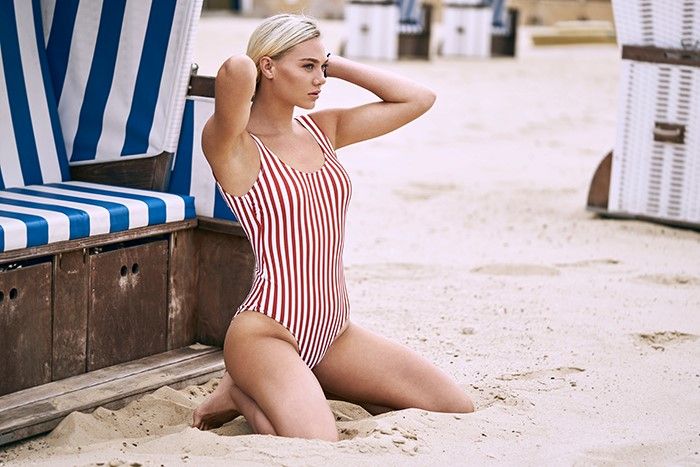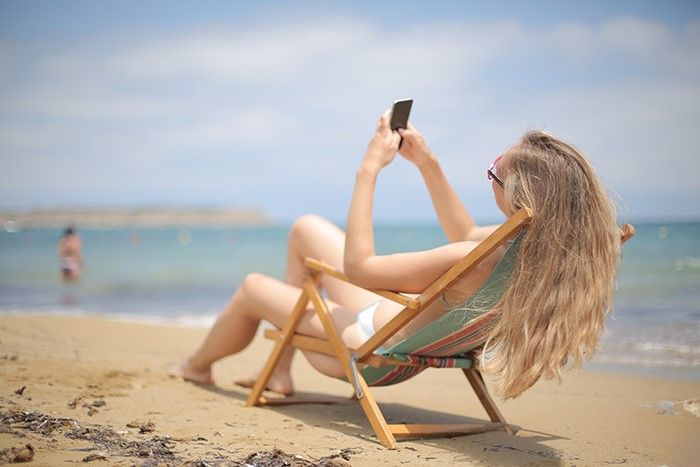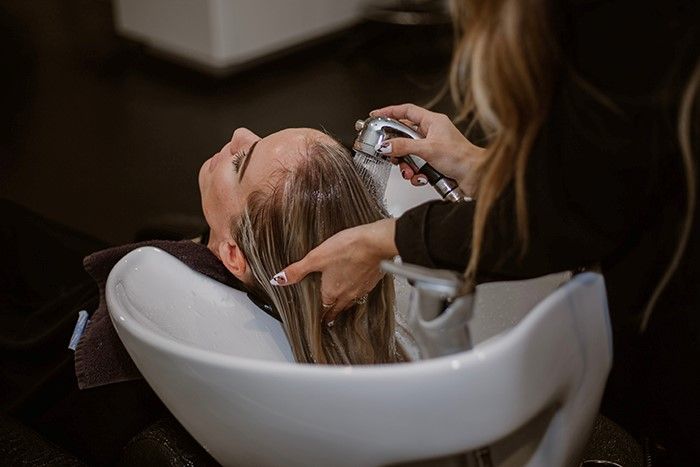Does sunscreen affect the color of hair extensions?
Have you ever wondered why your blonde hair extensions turned pink/orange? You've been wearing the same hair extensions all winter, but now the weather is suddenly warm and your hair seems to change color overnight? The answer is surprisingly simple: your sunscreen.
As the weather gets hotter, it's necessary to use sunscreen to protect your skin from the sun's harmful rays, but many people don't realize that while sunscreen does a great job of protecting your skin, you need to take the necessary steps to protect your hair from sunscreen.

What ingredients in sunscreen can cause my hair to change color?
Sunscreens are full of different ingredients, but two in particular are causing big problems: avobenzone, sometimes called butylmethoxydibenzoyl methane, and Octocrylene.
Avebenzone is a very common chemical used to make sunscreens because it protects against BOTH UVB rays and UVA rays. Although avenbenzone is an effective UVB and UVA ray protector, it only provides protection for about 30 minutes once exposed to sunlight, so Octocrylene is added to prevent this to make it work for longer.
The exact reason these two ingredients produce such extreme reactions when exposed to hair is that it is an active ingredient. If used in combination with water that is high in iron (most of the water in our showers), the iron in the water can cause oxidation, aka a rust stain. That's why exposing your hair to sunscreen for days on a hot day can cause this chemical reaction, with the end result... Pink/orange hair extensions.

How can I protect my hair extensions from being stained by sunscreen?
In short, there are only two effective ways to prevent this from happening. The first is to avoid sunscreen with hair extensions, but that's more complicated than it sounds. Since hair extensions are often so long, they're likely to brush against your body when you apply sunscreen, and you're likely to sweat, so sunscreen will seep into your hair through sweat throughout the day. Plus, if you wear extensions down, you're more likely to run your fingers through your hair, further depositing more sunscreen residue as well as sweat and moisture, which continues to speed up the process. To avoid this, it's best to keep your hair secured in a bun and keep it away from your skin.
The second way to protect yourself from sunscreen staining your hair extensions is to buy a sunscreen that does not contain avenbenzone. These are naturally more expensive because of their higher quality and more expensive ingredients, but it's worth buying to protect your hair extensions from the effects of sunscreen.

Sunscreen, Hair Extensions and Coral Reefs
A common question often asked by hair extension wearers is why the problem is so common in the UK, but for Australian hair extension wearers it rarely happens, and there is a simple explanation for why.
Avenbenzone is found in most UK sunscreens as it is FDA approved as a cost-effective ingredient, but in order for the ingredient to be effective it must be used with Octocrylene, which is known to be harmful to the sea. These components can impair growth and photosynthesis, bleach, damage and deform corals, cause defects in young mussels, impair the immune and reproductive systems of sea urchins, decrease fertility and reproduction of fish, and accumulate in dolphin tissues.
Australia has the world's largest coral reef system, so there is an urgent need to ensure Australians can use Avenbenzone - and Octocrylene-free sunscreens to prevent such damage. As a result, many Australians may not even be aware of this and will buy sunscreens that do not contain these ingredients, so will not fret about the possible side effects of hair extensions. Many sunscreens in Australia are marketed as "reef-friendly", further increasing their chances of becoming the sunscreen of choice over those that are not eco friendly. As our waterways contain only 1 known coral reef, protecting our waters from Avenbenzone is not a pressing issue in the UK, so manufacturers generally continue to use it in their formulations, and UK customers may not have much idea that they need to pay attention to it until now.

What To Do If Your Hair Extensions Have Turned Pink/Orange From Sunscreen Staining
If you have experienced suncream staining and your hair extensions are now pink/orange, don't worry, your hair extensions can be saved. Follow our step-by-step process below to correct the staining, and restore your hair extensions to their original colour.
Step 1: Shampoo your hair thoroughly to clean out any product that may remain on the surface.
Step 2: Using one sachet of Hair Extension Rescue Treatment, massage the product into the affected area. Leave it on for a while before rinsing the extension.
Step 3: Use a purple shampoo to neutralise any remaining warm pigment in your hair extensions, ensuring you only leave the shampoo on the hair for no more than a minute to ensure purple staining does not occur.
Step 4: Use an intensive conditioning mask and leave it in your hair extensions for as long as possible, avoiding the conditioner from reaching your roots and knots.
Step 5: Rinse your hair extensions clean, and blow-dry as normal.
Optional Step 6: You should see a considerable difference in the staining of your hair extensions, however depending on the severity of the staining, you may need to repeat this process 2-3 times to completely clean away any staining.
